Events
| Name | organizer | Where |
|---|---|---|
| MBCC “Doing Business with Mongolia seminar and Christmas Receptiom” Dec 10. 2025 London UK | MBCCI | London UK Goodman LLC |
NEWS
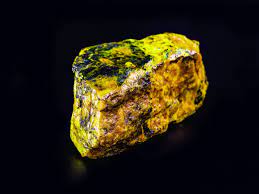
The Parliament Finalizes and Adopts Amendments to the Nuclear Energy Law www.gogo.mn
Parliament: The law now allows for replacing the state's ownership share with a special royalty system.
The Parliament of Mongolia has officially approved the proposed amendments to the Nuclear Energy Law and related legislation.
The law now includes provisions to replace the state's mandatory 34% ownership with a Special Royalty on Mineral Resource Utilization (SRMRU) and to convert ordinary shares into preferred shares. Specifically, the SRMRU will consist of base, special, and incremental royalties. The base royalty will be set at 5% of the sales value, while the special royalty, adjusted for deposit characteristics, will also be 5%. Incremental royalties will range from 0% to 9% based on market prices.
By converting ordinary shares into 10% preferred shares, Mongolia avoids financial liabilities while securing priority in dividend payouts. Additionally, investment agreements may now be extended for up to 20 years. A provision has also been introduced to place funds for post-mine closure rehabilitation and restoration in a special foreign currency account at the Bank of Mongolia, ensuring they are used exclusively for their intended purpose.
However, some lawmakers criticized the law for lacking detailed regulations regarding environmental protection, water use, and waste management, emphasizing the need to address these issues during contract negotiations.
Following the adoption of the law, the next steps will involve discussions on investment agreements. According to the Chief of the Cabinet Secretariat, the Parliament will review these agreements. The Minister of the relevant sector announced plans to finalize an agreement with Orano Mining by January 2025.
Translated by ChatGPT
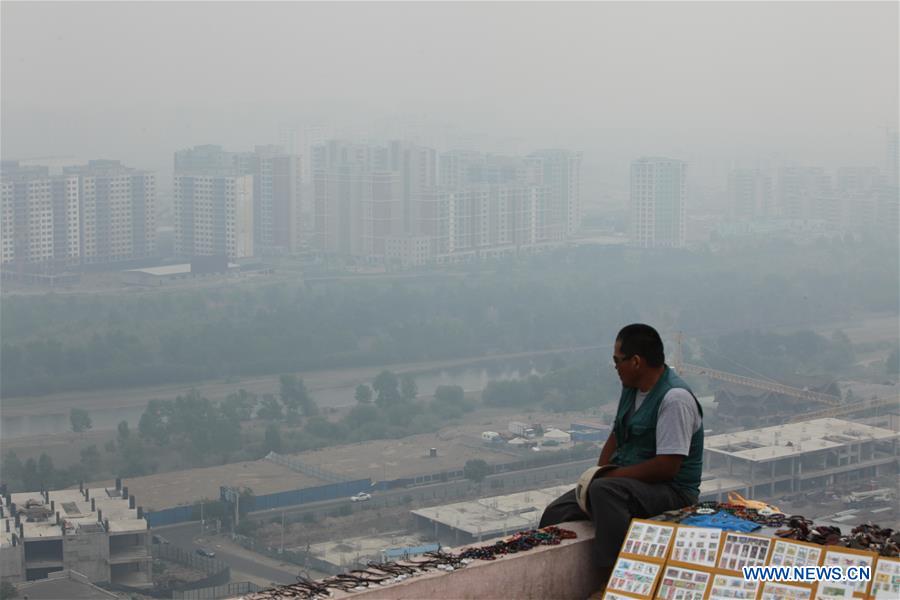
Worsening air pollution in Mongolian capital sparks public alarm www.socialnews.xyz
Deteriorating air quality mostly driven by processed fuel-based heating has sparked growing public concerns in Ulan Bator, the capital of Mongolia, as residents embrace unusually harsh winter conditions.
The city's Air Quality Index showed that as of 10 A.M. local time on Thursday, PM2.5 levels in the city's Ger districts exceeded 500 micrograms per cubic meter, while central areas recorded levels of 200 micrograms per cubic meter, both significantly surpassing the World Health Organisation's recommended safety limits, Xinhua news agency reported.
PM2.5 particles, which measure 2.5 microns or below in diameter, pose serious health risks as they can penetrate deep into the respiratory system, reaching lungs and entering the bloodstream, medical experts warn.
Air pollution has been a persistent issue in Ulan Bator, home to nearly half of Mongolia's population of 3.5 million. Over half of the capital's population reside in Ger districts with a lack of basic infrastructure such as running water, central heating, and sewage systems.
To stay warm and cook during winters, residents rely on processed fuels and other flammable materials, contributing significantly to the city's air pollution.
Since the early 2000s, the Mongolian government, in collaboration with international organisations, has implemented various measures to combat air pollution, including replacing raw coal with improved fuels. However, the efforts have yet to yield significant improvements in Ulan Bator's air quality.
Mongolia's climate is characterised by a strong continental influence, featuring long, frigid winters and short, warm summers. Ulan Bator often faces temperatures as low as minus 25 degrees Celsius during winters.
Source: IANS
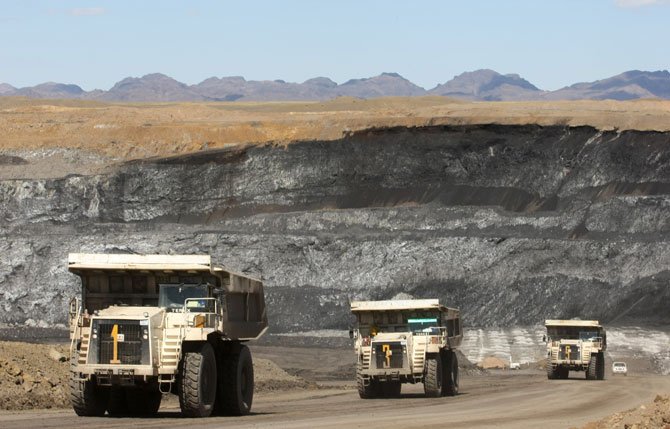
The Government of Mongolia Supports the Next Comprehensive Reform of the "Erdenes Mongol" Group www.montsame.mn
At the regular session of the Cabinet of Mongolia on November 20, 2024, a presentation was made to the members of the Cabinet on the measures taken as part of the reforms implemented by the “Erdenes Mongol” Group to improve leadership, governance, and the overall operations, as well as to establish Mongolia’s Sovereign Wealth Fund.
Through substantial enhancements in corporate governance, operational management, and systemic overhauls, the “Erdenes Mongol” Group achieved noteworthy production results in 2023. The “Erdenes Mongol” Group mined 599.6 thousand tons of copper concentrate and 35.1 million tons of coal, generating a sales revenue of MNT 14.9 trillion and a net profit of MNT 4.5 trillion. These robust financial outcomes directly contributed MNT 4.5 trillion in taxes to the State Budget of Mongolia. As a result, USD 3.6 billion was generated for the Central Bank of Mongolia, making up 77 percent of the Foreign Exchange Reserves. The parent company of the Group paid off accumulated debts of MNT 200.0 billion at the company level and MNT 394.0 billion at the group level.
The improvement in the Group's operations and the increase in financial performance created the opportunity to distribute dividends to the shareholders of "Erdenes Tavan Tolgoi" JSC. The dividends were allocated from the company's net profits for 2022 and 2023.
The State Great Khural of Mongolia has adopted a Law on Mongolia’s Sovereign Wealth Fund to ensure the fundamental principles of the Constitution of Mongolia and achieve the goal of distributing the majority of the benefits of natural resources equitably and fairly to citizens by generating them in Mongolia’s Sovereign Wealth Fund. This has not only created a legal foundation for the Mongolian people to own their wealth but also has established a legal basis for the legal status and stable operation of the "Erdenes Mongol" Group.
In 2024, the "Erdenes Mongol" Group generated MNT 500 billion for the Sovereign Wealth Fund, providing the opportunity for 10,000 households to enter the housing program. The "Erdenes Mongol" Group plans to implement the next comprehensive reform aimed at increasing the Sovereign Wealth Fund's revenue.
In connection with the presentation, the Cabinet of Mongolia tasked pertinent officials with:
-Continuing the comprehensive reform to increase the revenue of Mongolia’s Sovereign Wealth Fund and the Savings Fund of the Sovereign Wealth Fund and distribute the benefits of natural resources equitably and fairly to the people of Mongolia through improving the governance, operations, and efficiency of state-owned mining companies,
-Accelerating the process of expropriating lands for the establishment of industrial and technological parks, including the “Steel Production Complex," "Construction Materials Manufacturing Complex," "Coal-Chemical Complex," "Fluorspar Processing Complex," and "Coke-Chemical Complex," for state special needs,
-Submitting the proposal to the Cabinet meeting to include the six industrial and technological parks to be implemented by "Erdenes Mongol" LLC in the list of sectors, activities, product types, and locations for industrial and technological parks,
-Implementing measures to increase the allocation of freight wagons owned by public and state-owned entities under the "Erdenes Mongol" Group to boost exports and increase foreign exchange reserves.
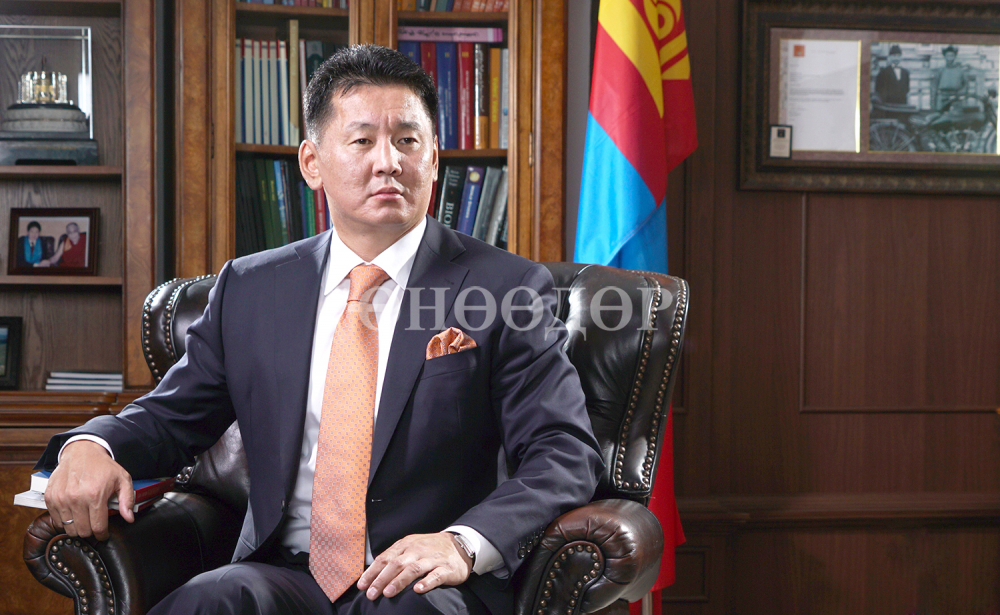
President of Mongolia Vetoes the Law on the State Budget for 2025 www.montsame.mn
President of Mongolia Khurelsukh Ukhnaa has vetoed the Law on the State Budget for 2025 and the accompanying laws, based on the relevant provisions of the Constitution and the Law on the President. Head of the Office of the President of Mongolia Zandanshatar Gombojav and other officials briefed on the veto on November 20, 2024.
Head of the Office of the President of Mongolia Zandanshatar Gombojav noted that the President’s decision to veto the Law on the State Budget for 2025 was based on the requirement for the State Budget to be efficient, cost-saving, and deficit-free. The veto was also based on the Parliament’s approval of the resolution to adjust the 2025 State Budget without meeting the prerequisites which include increased expenditure, decreased revenue, and required changes to the cost of approved projects and programs during the fiscal year.
The State Budget serves as a guarantee to overcome potential economic difficulties with minimal losses, increase national savings, limit price inflation, ensure economic stability, and support the normal operations of citizens, businesses, and taxpayers. Therefore, the Head of State emphasized the necessity of approving next year's State Budget in a manner that is efficient, economical, and deficit-free.
Additionally, President Khurelsukh highlighted the importance of considering the conditions of the global market and fluctuations in raw material prices, while focusing on fundamental principles such as increasing the country's foreign exchange reserves, boosting budget savings, and reducing debt. The Head of State emphasized the need to implement a countercyclical fiscal policy and adopt a deficit-free budget.
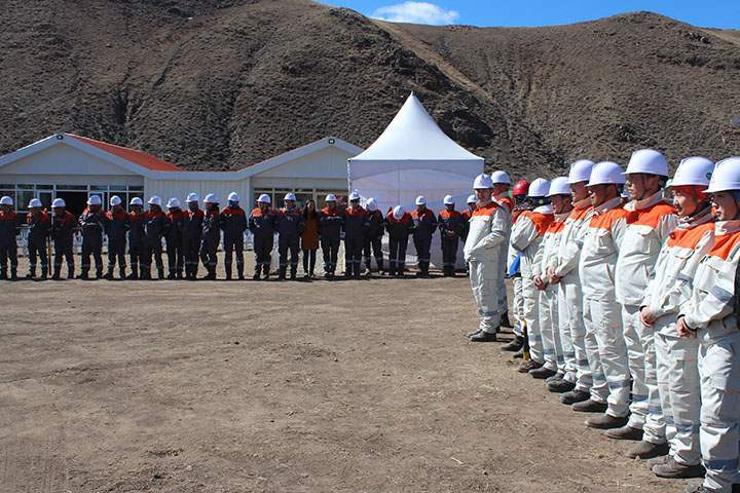
Draft Amendment to the Law on Labor Force Migration to Be Submitted to Parliament www.montsame.mn
During its regular session on November 20, 2024, the Cabinet decided to submit the draft amendment to the Law on Labor Force Migration to the State Great Khural.
The revised Law on Labor Force Migration came into effect on July 1, 2022. To address the labor shortage in the labor market, a flexible policy is being observed for the employment of foreigners in Mongolia. The Government deemed it necessary to set a limit on the number and percentage of foreign workers in the highly productive sectors of the economy, including mining, information and communications, finance and insurance, and real estate, and encourage the employment of Mongolian citizens in these sectors. However, the Government believes it should determine the number and percentage of foreign workers employed in the construction, energy, manufacturing, and processing sectors, as well as the reduction and exemption of workplace fees.
The Law on Labor Force Migration states that “The employer shall have the right to request an invitation to hire a foreign employee in the event of failing to employ a domestic employee within 14 business days after placing a job advertisement in the employment registry and database and starting an active search for an employee. The 14 business day period specified in the law is considered a hindrance to enterprises and companies engaged in seasonal construction work when inviting foreign employees. Therefore, the Government intends to resolve this issue through the amendment.
The amendment will provide several benefits to enterprises and investors operating in sectors other than mineral and oil, including saving expenses through reduction or exemption from workplace fee concession to the Employment Support Fund, swiftly overcoming labor shortages, improving economic efficiency, and increasing the number of businesses. It would also play an important role in intensifying the implementation of strategically important infrastructure, processing, and development projects in Mongolia.
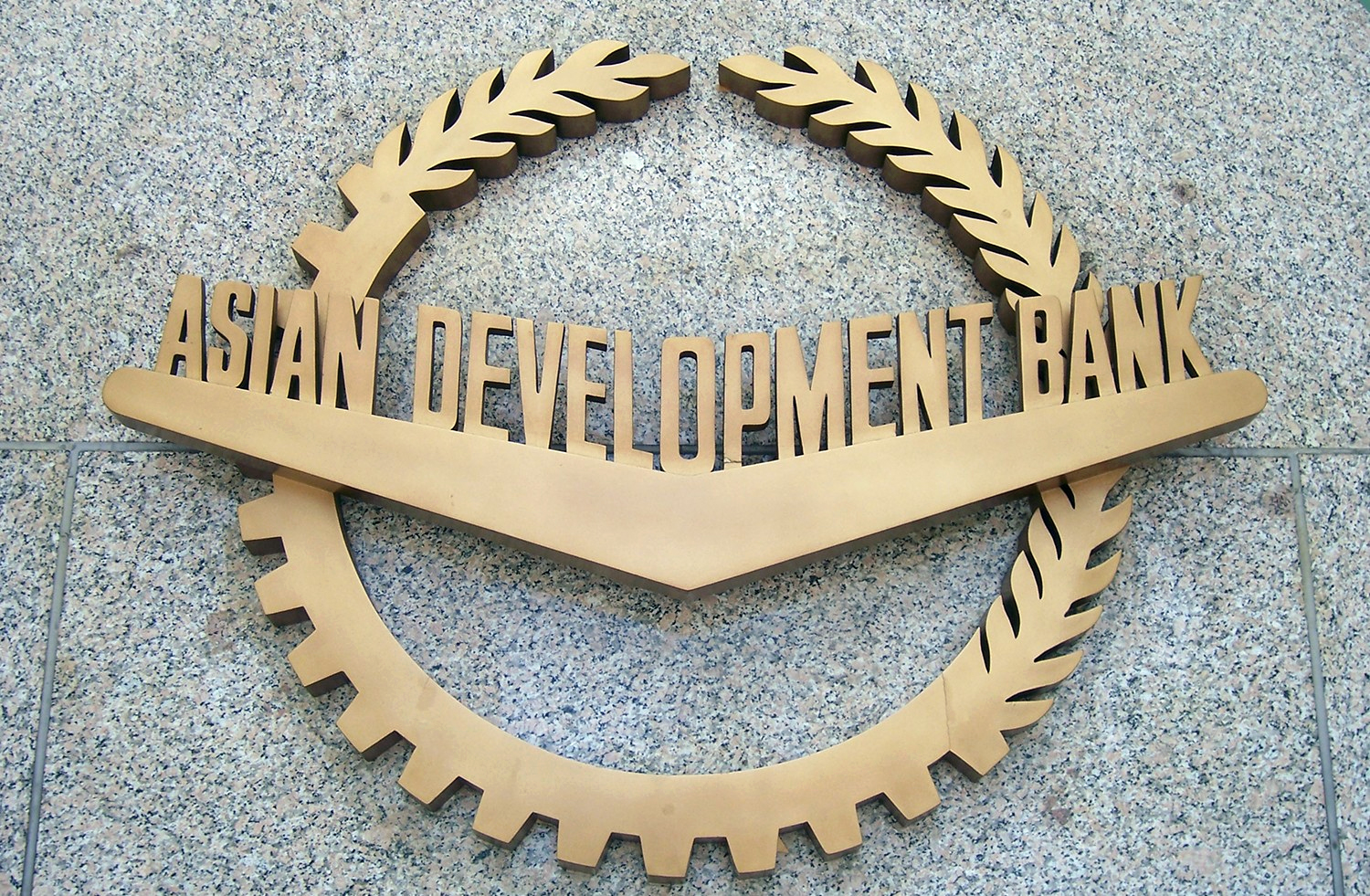
ADB, Mongolia sign projects to drive climate action, enhance health services www.xinhuanet.com
The Asian Development Bank (ADB) and the Mongolian government on Wednesday signed two projects aimed at accelerating climate investments and improving access to affordable, quality health services across the country.
The agreements were signed by ADB's Country Director for Mongolia Shannon Cowlin and Mongolia's Minister of Finance Bold Javkhlan during a ceremony in Ulan Bator, the capital of Mongolia.
"These two projects mark a significant step toward a more sustainable, resilient, and inclusive future for Mongolia," said Cowlin. "By embedding climate action into national plans and budgets, we can catalyze both public and private investments, driving a transition to a low-carbon, inclusive, and resilient economy. At the same time, we must also ensure that underserved communities have access to essential health services."
The policy-based loan of 100 million U.S. dollars for Mongolia's Accelerating Climate Investment Program aims to enhance the country's capacity to meet its climate goals under the Nationally Determined Contribution and National Adaptation Plan through improved institutional frameworks, gender-responsive strategies, and climate action budgeting.
The program focuses on catalyzing investments in renewable energy, energy efficiency, and climate-resilient agriculture, while expanding green financing mechanisms like green bonds and loans to support low-carbon development, according to the ADB.
Meanwhile, the Improving Access to Health Services for Disadvantaged Groups Investment Program - Tranche 2, valued at 82.2 million dollars, aims to enhance primary healthcare in urban and rural areas, upgrade district and hospitals in provinces, and strengthen procurement and financial management systems.
Key initiatives include building a new hospital in Chingeltei District of the capital city, upgrading a hospital in the western province of Khovd with low-carbon technology, establishing gender-responsive family health centers in underserved areas, providing emergency medical equipment, and reforming healthcare financing and service delivery models, said the bank.

Mongolia Holds First National Committee Session on the Sovereign Wealth Fund and Housing www.montsame.mn
The First Session of the National Committee on the Sovereign Wealth Fund and Housing took place in Ulaanbaatar, Mongolia on November 19, 2024.
Participants of the Session discussed a wide range of issues related to the Sovereign Wealth Fund and housing, including their current state, completed works, national housing policy, urban planning, infrastructure, mortgage loans, and other measures. In Mongolia, 30 percent of households reside in residential apartments while 70 percent live in houses and gers without full access to engineering infrastructure and networks. Among these, 273,736 households live in Ulaanbaatar, 144,308 in aimag centers, and 295,775 reside in soum centers.
As part of the Housing Policy funded by the Savings Fund of the Sovereign Wealth Fund, Oyun-Erdene Luvsannamsrai, Prime Minister of Mongolia and Head of the National Committee for the Sovereign Wealth Fund and Housing, instructed the relevant Government members and National Committee members to implement the following measures by January 15, 2025:
To formulate legal documents related to the implementation of the Law on National Housing and the Housing Policy, and submit them to the State Great Khural of Mongolia,
To develop policies and strategy maps for housing citizens and promoting young families, update the mortgage loan financing system,
To reform the funding system of mortgage loans, make a plan to increase its sources,
To approve and implement standards and models for residential apartments and green housing, create conditions for granting mortgage loans to residential apartments, and make necessary regulations,
To enhance power and heat supply sources required for the implementation of the National Housing Plan, develop and implement a Plan for line expansion,
To develop a plan for land acquisition, re-planning ger districts of the Capital City with state and local funds, construction of infrastructure in aimags, and present it to the Head of the National Committee.
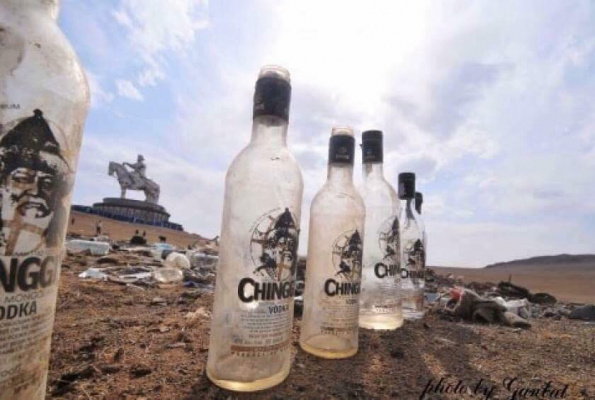
Bids for Incineration Plant and Waste to Energy Plant to Be Announced Next Month www.montsame.mn
The Governor's Office of the Capital City of Mongolia plans to launch phased measures to build a sludge drying and incineration plant and a waste-to-energy plant between 2024 and 2028 as part of improving Ulaanbaatar's engineering infrastructure.
Although the New Central Wastewater Treatment Plant has been completed, it cannot be put into operation as the sewage pipeline and sludge drying plant have not been constructed, necessitating a new sludge drying and incineration plant.
“Currently, we are collecting sludge on a field, drying it naturally, and burying it. Many countries burn the sludge in closed incineration furnaces, extracting energy and gas, and using the remainder as construction materials. In the first phase, we are going to announce a tender for building a sludge drying and incineration plant under a public-private partnership,” stated the Governor of the Capital City and Mayor of Ulaanbaatar Nyambaatar Khishgee, in his report on the construction projects to be carried out in the coming years within the framework of the “20-Minute City.”
Second Deputy Governor of the Capital City Amartuvshin Amgalanbayar was tasked with announcing another tender for a waste-to-energy plant at the centralized landfills at Tsagaan Davaa and Moringiin Davaa by this December 2024. After the plants are built, the Governor's Office of the Capital City plans to take the next phase of actions including closing the centralized landfills and improving waste collection management.

Chinese ambassador visits highway project in northern Mongolia www.xinhuanet.com
Chinese Ambassador to Mongolia Shen Minjuan has visited a key highway project in the northern Mongolian province of Darkhan-Uul.
The Chinese Embassy in Mongolia will continue to create favorable conditions for Chinese companies in Mongolia, the ambassador said.
The Ulan Bator-Darkhan Highway Section 5 project was built by the China Gezhouba Group International Engineering. The highway is a significant infrastructure to improve connectivity between the Mongolian capital and northern regions.
The project was awaiting review and approval by the Mongolian side.

India and Mongolia plan road map for stronger bilateral pharmaceutical ties through collaborations www.pharmabiz.com
Following a pivotal virtual meeting aimed at exploring business opportunities in the pharmaceutical sector, the High Commission of India in Ulaanbaatar and the Pharmaceuticals Export Promotion Council of India (Pharmexcil) are planning a road map for stronger bilateral pharmaceutical ties through collaborations.
This meet was part of a broader effort to facilitate cross-border partnerships, encourage knowledge sharing, and promote Indian pharmaceutical products in Mongolia.
The virtual meet focused on highlighting the potential of the Mongolian pharmaceutical market and creating a platform for Indian companies to engage with local Mongolian businesses.
According to Raja Bhanu, director general (DG), Pharmexcil, “The partnership between the High Commission of India in Ulaanbaatar and Pharmexcil was central to the success of the event. This collaboration reflected a mutual commitment to fostering deeper bilateral relations, particularly in the pharmaceutical sector, which is becoming increasingly important in both economies. By joining forces, the High Commission and Pharmexcil sought to open new avenues for Indian pharmaceutical companies to expand their footprint in Mongolia, a market with growing demand for quality healthcare products.”
The event served as an ideal platform for Indian companies already operating in Mongolia as well as those seeking to enter the market. It provided invaluable insights into the regulatory landscape, market dynamics, and potential business opportunities within Mongolia's rapidly developing pharmaceutical industry.
The virtual meet also facilitated networking between Indian pharmaceutical companies and Mongolian business leaders, creating a direct channel for collaboration. The event’s success emphasized the importance of such partnerships in driving mutual growth and increasing trade between the two nations. This collaboration is expected to lead to stronger commercial ties, contributing to India’s expanding role in the global pharmaceutical market.
The goal is not only to enhance bilateral trade but also to position both countries as key players in the region's pharmaceutical landscape.
This partnership between India and Mongolia underscores the shared vision of economic growth, innovation, and collaboration. With more such initiatives planned, the pharmaceutical sector is expected to become a cornerstone of India-Mongolia trade relations, paving the way for future growth, investment, and business expansion in both countries.
- «
- 1
- 2
- 3
- 4
- 5
- 6
- 7
- 8
- 9
- 10
- 11
- 12
- 13
- 14
- 15
- 16
- 17
- 18
- 19
- 20
- 21
- 22
- 23
- 24
- 25
- 26
- 27
- 28
- 29
- 30
- 31
- 32
- 33
- 34
- 35
- 36
- 37
- 38
- 39
- 40
- 41
- 42
- 43
- 44
- 45
- 46
- 47
- 48
- 49
- 50
- 51
- 52
- 53
- 54
- 55
- 56
- 57
- 58
- 59
- 60
- 61
- 62
- 63
- 64
- 65
- 66
- 67
- 68
- 69
- 70
- 71
- 72
- 73
- 74
- 75
- 76
- 77
- 78
- 79
- 80
- 81
- 82
- 83
- 84
- 85
- 86
- 87
- 88
- 89
- 90
- 91
- 92
- 93
- 94
- 95
- 96
- 97
- 98
- 99
- 100
- 101
- 102
- 103
- 104
- 105
- 106
- 107
- 108
- 109
- 110
- 111
- 112
- 113
- 114
- 115
- 116
- 117
- 118
- 119
- 120
- 121
- 122
- 123
- 124
- 125
- 126
- 127
- 128
- 129
- 130
- 131
- 132
- 133
- 134
- 135
- 136
- 137
- 138
- 139
- 140
- 141
- 142
- 143
- 144
- 145
- 146
- 147
- 148
- 149
- 150
- 151
- 152
- 153
- 154
- 155
- 156
- 157
- 158
- 159
- 160
- 161
- 162
- 163
- 164
- 165
- 166
- 167
- 168
- 169
- 170
- 171
- 172
- 173
- 174
- 175
- 176
- 177
- 178
- 179
- 180
- 181
- 182
- 183
- 184
- 185
- 186
- 187
- 188
- 189
- 190
- 191
- 192
- 193
- 194
- 195
- 196
- 197
- 198
- 199
- 200
- 201
- 202
- 203
- 204
- 205
- 206
- 207
- 208
- 209
- 210
- 211
- 212
- 213
- 214
- 215
- 216
- 217
- 218
- 219
- 220
- 221
- 222
- 223
- 224
- 225
- 226
- 227
- 228
- 229
- 230
- 231
- 232
- 233
- 234
- 235
- 236
- 237
- 238
- 239
- 240
- 241
- 242
- 243
- 244
- 245
- 246
- 247
- 248
- 249
- 250
- 251
- 252
- 253
- 254
- 255
- 256
- 257
- 258
- 259
- 260
- 261
- 262
- 263
- 264
- 265
- 266
- 267
- 268
- 269
- 270
- 271
- 272
- 273
- 274
- 275
- 276
- 277
- 278
- 279
- 280
- 281
- 282
- 283
- 284
- 285
- 286
- 287
- 288
- 289
- 290
- 291
- 292
- 293
- 294
- 295
- 296
- 297
- 298
- 299
- 300
- 301
- 302
- 303
- 304
- 305
- 306
- 307
- 308
- 309
- 310
- 311
- 312
- 313
- 314
- 315
- 316
- 317
- 318
- 319
- 320
- 321
- 322
- 323
- 324
- 325
- 326
- 327
- 328
- 329
- 330
- 331
- 332
- 333
- 334
- 335
- 336
- 337
- 338
- 339
- 340
- 341
- 342
- 343
- 344
- 345
- 346
- 347
- 348
- 349
- 350
- 351
- 352
- 353
- 354
- 355
- 356
- 357
- 358
- 359
- 360
- 361
- 362
- 363
- 364
- 365
- 366
- 367
- 368
- 369
- 370
- 371
- 372
- 373
- 374
- 375
- 376
- 377
- 378
- 379
- 380
- 381
- 382
- 383
- 384
- 385
- 386
- 387
- 388
- 389
- 390
- 391
- 392
- 393
- 394
- 395
- 396
- 397
- 398
- 399
- 400
- 401
- 402
- 403
- 404
- 405
- 406
- 407
- 408
- 409
- 410
- 411
- 412
- 413
- 414
- 415
- 416
- 417
- 418
- 419
- 420
- 421
- 422
- 423
- 424
- 425
- 426
- 427
- 428
- 429
- 430
- 431
- 432
- 433
- 434
- 435
- 436
- 437
- 438
- 439
- 440
- 441
- 442
- 443
- 444
- 445
- 446
- 447
- 448
- 449
- 450
- 451
- 452
- 453
- 454
- 455
- 456
- 457
- 458
- 459
- 460
- 461
- 462
- 463
- 464
- 465
- 466
- 467
- 468
- 469
- 470
- 471
- 472
- 473
- 474
- 475
- 476
- 477
- 478
- 479
- 480
- 481
- 482
- 483
- 484
- 485
- 486
- 487
- 488
- 489
- 490
- 491
- 492
- 493
- 494
- 495
- 496
- 497
- 498
- 499
- 500
- 501
- 502
- 503
- 504
- 505
- 506
- 507
- 508
- 509
- 510
- 511
- 512
- 513
- 514
- 515
- 516
- 517
- 518
- 519
- 520
- 521
- 522
- 523
- 524
- 525
- 526
- 527
- 528
- 529
- 530
- 531
- 532
- 533
- 534
- 535
- 536
- 537
- 538
- 539
- 540
- 541
- 542
- 543
- 544
- 545
- 546
- 547
- 548
- 549
- 550
- 551
- 552
- 553
- 554
- 555
- 556
- 557
- 558
- 559
- 560
- 561
- 562
- 563
- 564
- 565
- 566
- 567
- 568
- 569
- 570
- 571
- 572
- 573
- 574
- 575
- 576
- 577
- 578
- 579
- 580
- 581
- 582
- 583
- 584
- 585
- 586
- 587
- 588
- 589
- 590
- 591
- 592
- 593
- 594
- 595
- 596
- 597
- 598
- 599
- 600
- 601
- 602
- 603
- 604
- 605
- 606
- 607
- 608
- 609
- 610
- 611
- 612
- 613
- 614
- 615
- 616
- 617
- 618
- 619
- 620
- 621
- 622
- 623
- 624
- 625
- 626
- 627
- 628
- 629
- 630
- 631
- 632
- 633
- 634
- 635
- 636
- 637
- 638
- 639
- 640
- 641
- 642
- 643
- 644
- 645
- 646
- 647
- 648
- 649
- 650
- 651
- 652
- 653
- 654
- 655
- 656
- 657
- 658
- 659
- 660
- 661
- 662
- 663
- 664
- 665
- 666
- 667
- 668
- 669
- 670
- 671
- 672
- 673
- 674
- 675
- 676
- 677
- 678
- 679
- 680
- 681
- 682
- 683
- 684
- 685
- 686
- 687
- 688
- 689
- 690
- 691
- 692
- 693
- 694
- 695
- 696
- 697
- 698
- 699
- 700
- 701
- 702
- 703
- 704
- 705
- 706
- 707
- 708
- 709
- 710
- 711
- 712
- 713
- 714
- 715
- 716
- 717
- 718
- 719
- 720
- 721
- 722
- 723
- 724
- 725
- 726
- 727
- 728
- 729
- 730
- 731
- 732
- 733
- 734
- 735
- 736
- 737
- 738
- 739
- 740
- 741
- 742
- 743
- 744
- 745
- 746
- 747
- 748
- 749
- 750
- 751
- 752
- 753
- 754
- 755
- 756
- 757
- 758
- 759
- 760
- 761
- 762
- 763
- 764
- 765
- 766
- 767
- 768
- 769
- 770
- 771
- 772
- 773
- 774
- 775
- 776
- 777
- 778
- 779
- 780
- 781
- 782
- 783
- 784
- 785
- 786
- 787
- 788
- 789
- 790
- 791
- 792
- 793
- 794
- 795
- 796
- 797
- 798
- 799
- 800
- 801
- 802
- 803
- 804
- 805
- 806
- 807
- 808
- 809
- 810
- 811
- 812
- 813
- 814
- 815
- 816
- 817
- 818
- 819
- 820
- 821
- 822
- 823
- 824
- 825
- 826
- 827
- 828
- 829
- 830
- 831
- 832
- 833
- 834
- 835
- 836
- 837
- 838
- 839
- 840
- 841
- 842
- 843
- 844
- 845
- 846
- 847
- 848
- 849
- 850
- 851
- 852
- 853
- 854
- 855
- 856
- 857
- 858
- 859
- 860
- 861
- 862
- 863
- 864
- 865
- 866
- 867
- 868
- 869
- 870
- 871
- 872
- 873
- 874
- 875
- 876
- 877
- 878
- 879
- 880
- 881
- 882
- 883
- 884
- 885
- 886
- 887
- 888
- 889
- 890
- 891
- 892
- 893
- 894
- 895
- 896
- 897
- 898
- 899
- 900
- 901
- 902
- 903
- 904
- 905
- 906
- 907
- 908
- 909
- 910
- 911
- 912
- 913
- 914
- 915
- 916
- 917
- 918
- 919
- 920
- 921
- 922
- 923
- 924
- 925
- 926
- 927
- 928
- 929
- 930
- 931
- 932
- 933
- 934
- 935
- 936
- 937
- 938
- 939
- 940
- 941
- 942
- 943
- 944
- 945
- 946
- 947
- 948
- 949
- 950
- 951
- 952
- 953
- 954
- 955
- 956
- 957
- 958
- 959
- 960
- 961
- 962
- 963
- 964
- 965
- 966
- 967
- 968
- 969
- 970
- 971
- 972
- 973
- 974
- 975
- 976
- 977
- 978
- 979
- 980
- 981
- 982
- 983
- 984
- 985
- 986
- 987
- 988
- 989
- 990
- 991
- 992
- 993
- 994
- 995
- 996
- 997
- 998
- 999
- 1000
- 1001
- 1002
- 1003
- 1004
- 1005
- 1006
- 1007
- 1008
- 1009
- 1010
- 1011
- 1012
- 1013
- 1014
- 1015
- 1016
- 1017
- 1018
- 1019
- 1020
- 1021
- 1022
- 1023
- 1024
- 1025
- 1026
- 1027
- 1028
- 1029
- 1030
- 1031
- 1032
- 1033
- 1034
- 1035
- 1036
- 1037
- 1038
- 1039
- 1040
- 1041
- 1042
- 1043
- 1044
- 1045
- 1046
- 1047
- 1048
- 1049
- 1050
- 1051
- 1052
- 1053
- 1054
- 1055
- 1056
- 1057
- 1058
- 1059
- 1060
- 1061
- 1062
- 1063
- 1064
- 1065
- 1066
- 1067
- 1068
- 1069
- 1070
- 1071
- 1072
- 1073
- 1074
- 1075
- 1076
- 1077
- 1078
- 1079
- 1080
- 1081
- 1082
- 1083
- 1084
- 1085
- 1086
- 1087
- 1088
- 1089
- 1090
- 1091
- 1092
- 1093
- 1094
- 1095
- 1096
- 1097
- 1098
- 1099
- 1100
- 1101
- 1102
- 1103
- 1104
- 1105
- 1106
- 1107
- 1108
- 1109
- 1110
- 1111
- 1112
- 1113
- 1114
- 1115
- 1116
- 1117
- 1118
- 1119
- 1120
- 1121
- 1122
- 1123
- 1124
- 1125
- 1126
- 1127
- 1128
- 1129
- 1130
- 1131
- 1132
- 1133
- 1134
- 1135
- 1136
- 1137
- 1138
- 1139
- 1140
- 1141
- 1142
- 1143
- 1144
- 1145
- 1146
- 1147
- 1148
- 1149
- 1150
- 1151
- 1152
- 1153
- 1154
- 1155
- 1156
- 1157
- 1158
- 1159
- 1160
- 1161
- 1162
- 1163
- 1164
- 1165
- 1166
- 1167
- 1168
- 1169
- 1170
- 1171
- 1172
- 1173
- 1174
- 1175
- 1176
- 1177
- 1178
- 1179
- 1180
- 1181
- 1182
- 1183
- 1184
- 1185
- 1186
- 1187
- 1188
- 1189
- 1190
- 1191
- 1192
- 1193
- 1194
- 1195
- 1196
- 1197
- 1198
- 1199
- 1200
- 1201
- 1202
- 1203
- 1204
- 1205
- 1206
- 1207
- 1208
- 1209
- 1210
- 1211
- 1212
- 1213
- 1214
- 1215
- 1216
- 1217
- 1218
- 1219
- 1220
- 1221
- 1222
- 1223
- 1224
- 1225
- 1226
- 1227
- 1228
- 1229
- 1230
- 1231
- 1232
- 1233
- 1234
- 1235
- 1236
- 1237
- 1238
- 1239
- 1240
- 1241
- 1242
- 1243
- 1244
- 1245
- 1246
- 1247
- 1248
- 1249
- 1250
- 1251
- 1252
- 1253
- 1254
- 1255
- 1256
- 1257
- 1258
- 1259
- 1260
- 1261
- 1262
- 1263
- 1264
- 1265
- 1266
- 1267
- 1268
- 1269
- 1270
- 1271
- 1272
- 1273
- 1274
- 1275
- 1276
- 1277
- 1278
- 1279
- 1280
- 1281
- 1282
- 1283
- 1284
- 1285
- 1286
- 1287
- 1288
- 1289
- 1290
- 1291
- 1292
- 1293
- 1294
- 1295
- 1296
- 1297
- 1298
- 1299
- 1300
- 1301
- 1302
- 1303
- 1304
- 1305
- 1306
- 1307
- 1308
- 1309
- 1310
- 1311
- 1312
- 1313
- 1314
- 1315
- 1316
- 1317
- 1318
- 1319
- 1320
- 1321
- 1322
- 1323
- 1324
- 1325
- 1326
- 1327
- 1328
- 1329
- 1330
- 1331
- 1332
- 1333
- 1334
- 1335
- 1336
- 1337
- 1338
- 1339
- 1340
- 1341
- 1342
- 1343
- 1344
- 1345
- 1346
- 1347
- 1348
- 1349
- 1350
- 1351
- 1352
- 1353
- 1354
- 1355
- 1356
- 1357
- 1358
- 1359
- 1360
- 1361
- 1362
- 1363
- 1364
- 1365
- 1366
- 1367
- 1368
- 1369
- 1370
- 1371
- 1372
- 1373
- 1374
- 1375
- 1376
- 1377
- 1378
- 1379
- 1380
- 1381
- 1382
- 1383
- 1384
- 1385
- 1386
- 1387
- 1388
- 1389
- 1390
- 1391
- 1392
- 1393
- 1394
- 1395
- 1396
- 1397
- 1398
- 1399
- 1400
- 1401
- 1402
- 1403
- 1404
- 1405
- 1406
- 1407
- 1408
- 1409
- 1410
- 1411
- 1412
- 1413
- 1414
- 1415
- 1416
- 1417
- 1418
- 1419
- 1420
- 1421
- 1422
- 1423
- 1424
- 1425
- 1426
- 1427
- 1428
- 1429
- 1430
- 1431
- 1432
- 1433
- 1434
- 1435
- 1436
- 1437
- 1438
- 1439
- 1440
- 1441
- 1442
- 1443
- 1444
- 1445
- 1446
- 1447
- 1448
- 1449
- 1450
- 1451
- 1452
- 1453
- 1454
- 1455
- 1456
- 1457
- 1458
- 1459
- 1460
- 1461
- 1462
- 1463
- 1464
- 1465
- 1466
- 1467
- 1468
- 1469
- 1470
- 1471
- 1472
- 1473
- 1474
- 1475
- 1476
- 1477
- 1478
- 1479
- 1480
- 1481
- 1482
- 1483
- 1484
- 1485
- 1486
- 1487
- 1488
- 1489
- 1490
- 1491
- 1492
- 1493
- 1494
- 1495
- 1496
- 1497
- 1498
- 1499
- 1500
- 1501
- 1502
- 1503
- 1504
- 1505
- 1506
- 1507
- 1508
- 1509
- 1510
- 1511
- 1512
- 1513
- 1514
- 1515
- 1516
- 1517
- 1518
- 1519
- 1520
- 1521
- 1522
- 1523
- 1524
- 1525
- 1526
- 1527
- 1528
- 1529
- 1530
- 1531
- 1532
- 1533
- 1534
- 1535
- 1536
- 1537
- 1538
- 1539
- 1540
- 1541
- 1542
- 1543
- 1544
- 1545
- 1546
- 1547
- 1548
- 1549
- 1550
- 1551
- 1552
- 1553
- 1554
- 1555
- 1556
- 1557
- 1558
- 1559
- 1560
- 1561
- 1562
- 1563
- 1564
- 1565
- 1566
- 1567
- 1568
- 1569
- 1570
- 1571
- 1572
- 1573
- 1574
- 1575
- 1576
- 1577
- 1578
- 1579
- 1580
- 1581
- 1582
- 1583
- 1584
- 1585
- 1586
- 1587
- 1588
- 1589
- 1590
- 1591
- 1592
- 1593
- 1594
- 1595
- 1596
- 1597
- 1598
- 1599
- 1600
- 1601
- 1602
- 1603
- 1604
- 1605
- 1606
- 1607
- 1608
- 1609
- 1610
- 1611
- 1612
- 1613
- 1614
- 1615
- 1616
- 1617
- 1618
- 1619
- 1620
- 1621
- 1622
- 1623
- 1624
- 1625
- 1626
- 1627
- 1628
- 1629
- 1630
- 1631
- 1632
- 1633
- 1634
- 1635
- 1636
- 1637
- 1638
- 1639
- 1640
- 1641
- 1642
- 1643
- 1644
- 1645
- 1646
- 1647
- 1648
- 1649
- 1650
- 1651
- 1652
- 1653
- 1654
- 1655
- 1656
- 1657
- 1658
- 1659
- 1660
- 1661
- 1662
- 1663
- 1664
- 1665
- 1666
- 1667
- 1668
- 1669
- 1670
- 1671
- 1672
- 1673
- 1674
- 1675
- 1676
- 1677
- 1678
- 1679
- 1680
- 1681
- 1682
- 1683
- 1684
- 1685
- 1686
- 1687
- 1688
- 1689
- 1690
- 1691
- 1692
- 1693
- 1694
- »






